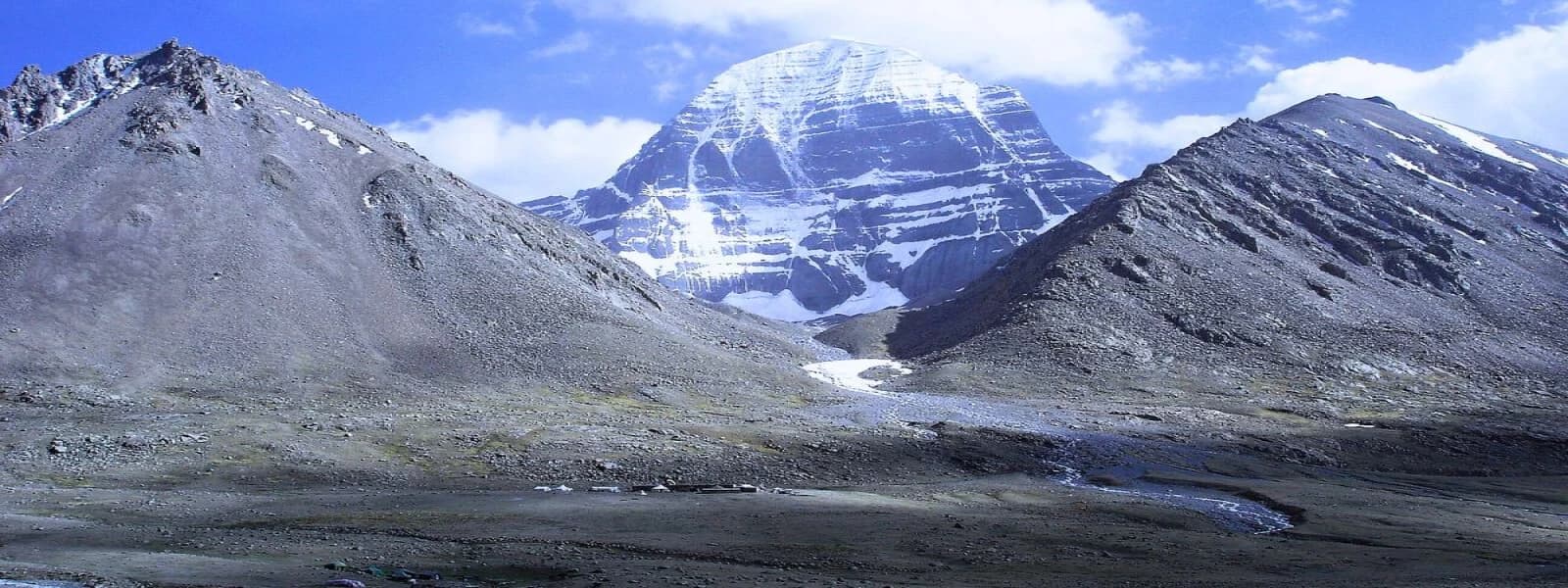Embark on a transformative journey to the sacred Mount Kailash and Lake Mansarovar with Regulus Nepal’s Kailash Mansarovar Yatra by Helicopter. This thoughtfully curated package offers a seamless experience for those seeking spiritual fulfillment, especially for senior citizens and individuals preferring a more accessible route. By combining air travel and scenic drives, this itinerary ensures a comfortable yet spiritually uplifting experience.
Mount Kailash holds profound significance across four major religions—Hinduism, Buddhism, Jainism, and Bon. It is revered as the abode of Lord Shiva and a symbol of cosmic power. Lake Mansarovar, situated at the foot of Mount Kailash, is believed to cleanse the soul of sins and offer spiritual rejuvenation. This package promises a lifetime journey into the heart of faith and tranquility.
Kailash Mansarovar Yatra by Helicopter from Lucknow
Your journey begins with a pickup from Lucknow railway station or airport. You’ll travel to Nepalgunj, a bustling city in Nepal, situated close to the Indian border.
Start your day with an early flight to Simikot, the gateway to Kailash Mansarovar. Upon arrival, spend the day acclimatizing and exploring the natural beauty of Simikot. If weather permits, proceed to Hilsa via helicopter, offering breathtaking views of snow-capped peaks and the Karnali River gorge.
Board a helicopter for a short flight to Hilsa, followed by a walk to the Nepal-Tibet border. After completing immigration, enter Tibet and drive to Taklakot, where you’ll rest and acclimatize.
Spend a full day acclimatizing at Taklakot to ensure a comfortable transition to higher altitudes. Take time to explore the area or meditate to prepare spiritually for the days ahead.
Drive to Lake Mansarovar, one of the holiest lakes in the world, with a brief stop at Rakshastal, known for its pristine beauty. At Mansarovar, take a holy dip and perform rituals amidst serene surroundings.
Begin your Kailash Parikrama at Yamadwara, also known as the “Gateway of the God of Death.” Trek to Deruphuk, marveling at the north face of Mount Kailash along the way. The scenic route features waterfalls, rocky cliffs, and the Ganesh Parvat.
This challenging day involves trekking over the Dolma La Pass (5700m), the highest point of the journey. Descend to Gaurikund and continue along the river to Zutulphuk, completing the most demanding part of the yatra.
Conclude the Parikrama with a short trek to meet your vehicle, then drive to the Nepal-Tibet border. Complete immigration formalities and proceed to Hilsa or Simikot, depending on weather conditions.
Fly back to Simikot by helicopter and onward to Nepalgunj. After lunch, drive back to Lucknow, concluding the yatra with memories to cherish forever.
- Transfers from Lucknow to Nepalgunj and return
- Accommodation with vegetarian meals throughout the journey
- Domestic flights and helicopter transfers (Nepalgunj-Simikot-Hilsa)
- Tibetan guide and Nepali support team
- Permits, visa fees, and necessary equipment
- Oxygen cylinder and medical support during the trek
- International flights and Nepal visa fees
- Personal expenses and travel insurance
- Costs for pony/porter services during Parikrama
- Accommodation in Kathmandu (if required due to delays)
Tibet Group Visa (TGV) Requirements
Travelers from all nations planning to visit Tibet via Nepal are required to obtain a Tibet Group Visa (TGV). This can only be processed in Kathmandu with the assistance of a registered tour operator. To ensure successful application, you should arrive in Kathmandu at least six working days prior to your departure date.
Key Information for Travelers
Foreign Nationals and Non-Resident Indians (NRIs)
- Entering Nepal: A valid passport and visa are mandatory for all foreign nationals and NRIs. Nepal provides a visa-on-arrival facility at Kathmandu airport upon presentation of required documents and payment of the visa fee.
- Entering Tibet/China: Travelers must carry a valid passport, visa, and a special permit to access the Kailash region. These are essential for undertaking the Kailash Yatra.
Travel Insurance
It is mandatory to have comprehensive travel insurance covering the Kailash region. Please note that the cost of travel insurance is not included in the tour price. Pilgrims must ensure they are adequately insured for the entire duration of the journey, covering risks such as medical emergencies and evacuation.
Medical Certificate
Travelers must provide a valid health certificate issued by a licensed physician, confirming their fitness to travel at altitudes exceeding 15,000 feet. Obtaining this certificate is the sole responsibility of the pilgrim, and the tour operator assumes no liability for any health-related issues.
Packing Essentials
Clothing
- Recommended Attire: Comfortable casual wear and sturdy walking shoes. Warm clothing is essential as mornings and nights can be very cold.
- Important Note for Women: Indian women pilgrims are advised not to wear sarees during the trip.
- Other Essentials: Bring any personal items, such as medicines, toiletries, and cosmetics, as they may be unavailable during the journey. Carrying a small first aid kit is also recommended.
Winter Wear
- Gore-Tex or high-quality insulated jackets
- Thermal underclothing
- Woolen gloves, sweaters, scarves, and caps
- Comfortable shoes or light leather boots (suitable for snow)
- Dust masks or balaclavas
What to Carry
- Snacks (chocolates, dry fruits, glucose, etc.)
- Water bottles and purifying tablets
- Sunglasses for UV protection
- Sunscreen lotion and wet tissues
- Personal medical kit (including Diamox for altitude sickness)
- Torch with spare batteries
- Daypack for essentials
- Camera, films, and binoculars
Health Considerations
The Kailash Yatra involves challenging high-altitude travel. Travelers should be in good physical health, as the journey includes trekking at altitudes exceeding 19,500 feet during the Parikrama. Conditions such as asthma or heart problems may hinder acclimatization. Consult a physician to evaluate your fitness for the trip.
Altitude Sickness
Traveling at high altitudes can lead to symptoms of altitude sickness, such as headaches, nausea, loss of appetite, or breathlessness. To minimize risks:
- Spend at least two nights in Kayrong (2,700m) to acclimatize.
- Stay hydrated, avoid alcohol and smoking, and refrain from strenuous activity.
- Carry Diamox tablets and consult your doctor about the appropriate dosage.
- The tour includes a Gamow bag, a specialized device to address severe altitude sickness.
Currency
The currency in Tibet is the Chinese Yuan (CNY).
- 1 USD ≈ 6 Yuan
- 1 Yuan ≈ 10 INR
Currency exchange is available at the Nepal-Tibet border. Ensure you re-exchange any unused Yuan at the border before re-entering Nepal.
Risks and Liabilities
All tours in Tibet are conducted under the regulations of the Tibet Tourism Bureau (TTB). While every effort is made to ensure a smooth journey, Kailash Vision Treks Pvt. Ltd. is not responsible for changes due to:
- Natural disasters (e.g., landslides, floods)
- Flight cancellations or delays
- Permit or visa processing delays
- Political unrest or unforeseen circumstances
Any additional expenses resulting from these events will be borne by the traveler.
Additional Information for Kailash Manasarovar Heli Trips
Nepalganj
Nepalganj, located near the India-Nepal border, serves as the gateway for flights to Simikot. There is no road connection between Nepalganj and Simikot, and flights depend heavily on weather conditions. Flight cancellations or delays may occur, and travelers should be prepared for these disruptions.
Simikot
Simikot, a remote hill town, acts as the transit point between Nepalganj and Hilsa. While facilities are basic, they are more developed than in Hilsa. Weather conditions play a critical role in flight schedules. Accommodation, food, and other services during delays are arranged on a direct payment basis.
Hilsa
Hilsa, the border town near Tibet, has limited infrastructure. Accommodation is basic, and food options are restricted to essentials such as rice, noodles, and soup. Prolonged delays can be uncomfortable, and travelers must manage with available resources.
Weather-Related Delays
Unpredictable weather often affects flight operations between Nepalganj, Simikot, and Hilsa, leading to delays. These disruptions can prolong the journey, particularly in Hilsa, where conditions are the most challenging. Patience and flexibility are crucial during such situations.
This revised guide ensures a smooth and informed journey for travelers, addressing key details about the Tibet Group Visa, travel requirements, and challenges you may face along the way.


